Introduction to Australian Native Flowers
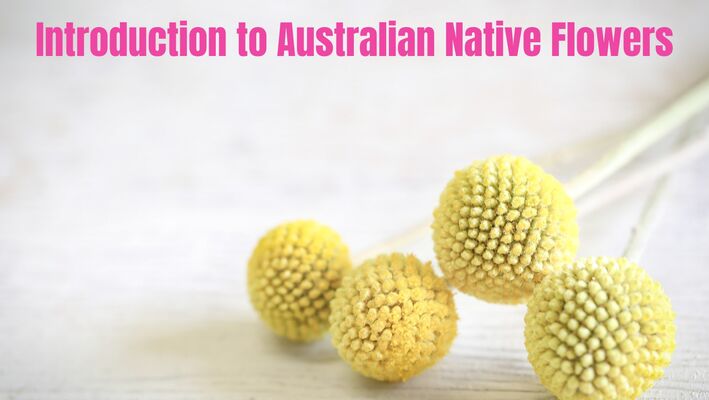
Australia is home to over 20,000 species of native flowering plants, representing around 11% of the world's total flora. The evolution of these flowers has been shaped by the continent's geographic isolation, harsh climate, and nutrient-deficient soils over millions of years. As a result, Australian native flowers showcase an incredible diversity of unique floral forms, vibrant colors, and have adapted specialised survival mechanisms.
Native flowers play an intrinsic role in Australia's ancient ecosystems. They provide vital habitat and food sources for native fauna, while some species have symbiotic relationships with birds and insects that pollinate them. Beyond ecology, flowers like Waratah, Kangaroo Paw, Banksia, Grevillea, and Sturt's Desert Pea have become iconic Australian symbols celebrated in art and culture.
This article offers an illuminating overview on Australia's diverse and wondrous native flowers. It explores some of the country’s most popular and unique floral species, and delves into their natural history, habitats, and conservation. We also cover the cultivation, commercial uses, and cultural significance of these iconic blooms. Whether you’re a gardening enthusiast, nature lover, or simply interested in Australia’s natural heritage, you’re sure to discover something new about our cherished botanical wonders!
Native Australian Flowers as Gifts
Australia's diverse native flowers make for wonderful gift options due to their striking beauty, symbolism, and ability to last well as cut flowers.
Popular picks like Waratahs, Banksias, Grevilleas, and Bottlebrushes showcase the vibrant colors, unique forms, and floral diversity that characterise Australian flora. These endemic blooms represent the landscapes, culture, and botanic heritage of the continent. Their resilience also echoes the Australian spirit of perseverance in harsh conditions.
From birthdays to anniversaries,housewarmings to condolences, native flowers convey thoughtfulness and warmth. They can express congratulations, love, appreciation, or support, adding a special Australian touch. Seasonal native blooms that reflect the time of year also showcase one's attentiveness.
Native flowers additionally make great gifts from Australia for friends or family overseas. International delivery services even carefully pack and ship fresh cuts or dried varieties worldwide. Recipients delight in these iconic floral gifts from Down Under.
Giving native plants like Lilly Pillies or Geraldton Wax bushes allows enjoyments for years as they grow in recipients' gardens. Potted natives and seeds also make eco-friendly green gifts.
With their symbolism, uniqueness, and ability to convey messages, Australian native flowers are set to captivate yet another generation as perfect gift options for all occasions.
Lily's Florist proudly offers a wide selection of Australia's native flowers, perfect for any occasion. Our collection features popular blooms like Waratahs, Banksias, Grevilleas, and Bottlebrushes, embodying the vibrant beauty and resilience of the Australian landscape. These native arrangements convey warmth and thoughtfulness, adding a special touch to celebrations or gestures of support. We also cater to international customers, delivering the unique charm of Australian flora worldwide. Whether it's a fresh bouquet or eco-friendly potted natives, Lily's Florist connects emotions and occasions with the distinctive allure of Australian native flowers, making every gift memorable and meaningful.
Top 10 Australian Native Flowers
Australia has over 20,000 indigenous flower species, each with unique traits adapted to this harsh continent. Here we showcase ten popular varieties that epitomise the diversity, resilience, and splendor of our botanical heritage.
1. Waratah
The iconic Waratah flower has become a quintessential symbol of the Australian bush. These stunning crimson blooms with protruding tufts of gold-tipped stamens grow on an upright woody shrub. Waratahs showcase great versatility - they can thrive as ornamental garden plants or be enjoyed as cut flowers where they last up to 10 days in a vase.
Waratahs can be propagated from seeds or cuttings, but cuttings have a higher success rate as seeds need very specific warm and cold conditioning to germinate properly. The best time to take Waratah cuttings for propagation is during spring or early summer when there is new growth. Cuttings should be 15-20cm long containing several sets of leaves. The stem base should be dipped in rooting hormone before planting in a sandy potting mix. Keep the soil moist and provide warmth and high light.
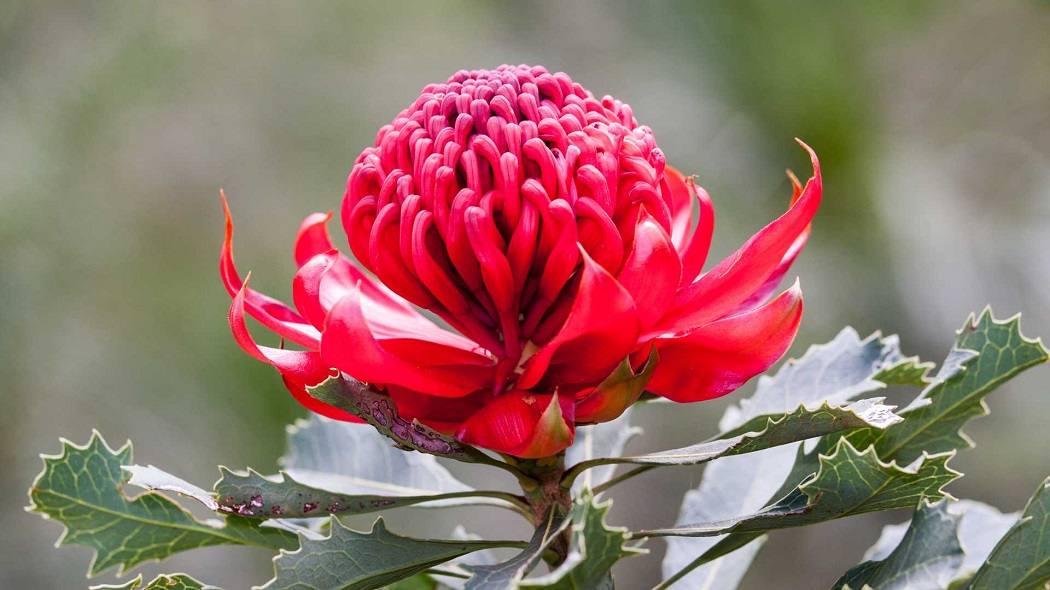
In gardens, established Waratah plants can reach 2-3m tall and do best in full sun or light shade. They flourish in well-drained acidic soils and benefit from mulching and protection from heavy frost. Pruning old stems after flowering encourages more dense blooms. Waratahs have low water needs but should be watered during drought. Feed with low phosphorus native plant fertiliser to encourage flowering. Propagating from cuttings allows you to multiply special cultivated varieties of this Australian native icon.
2. Kangaroo Paw
Kangaroo Paw refers to a group of Australian native plants from the Haemodoraceae family, particularly two genera - Anigozanthos and Macropidia. There are 11 known Anigozanthos species and several hybrid cultivars grown for their vibrant flowers which resemble furry kangaroo paws.
These hardy perennials thrive in hot, dry conditions across different regions of Australia. They grow well-drained sandy or loamy soils and can tolerate drought and frost once established. Kangaroo Paws flourish in full sun and provide long-lasting color from spring to fall.
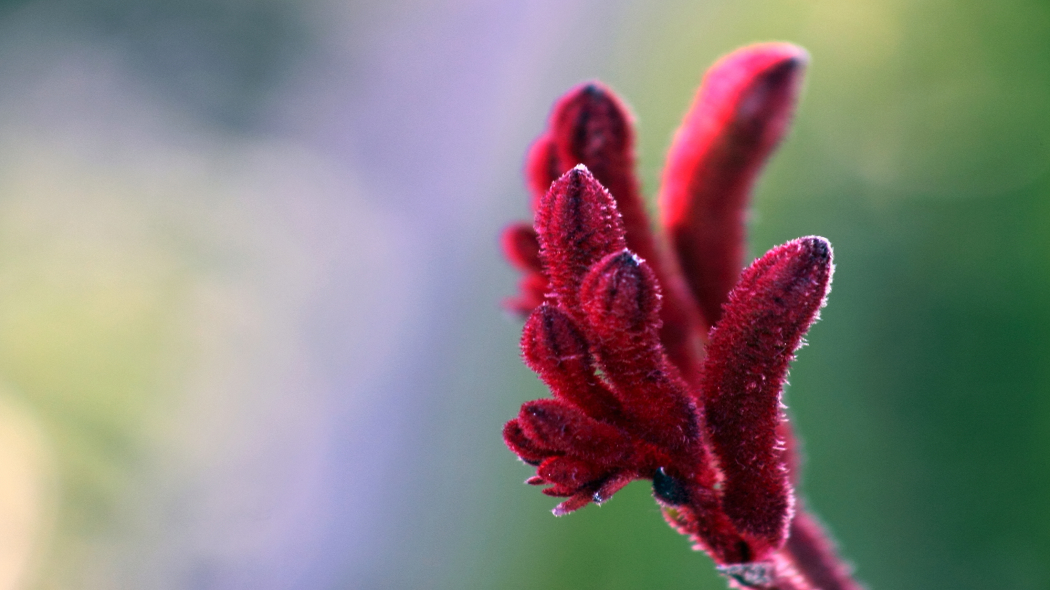
The velvety tubular flowers bloom in striking hues like red, yellow, pink, green and orange. They are borne on tall, upright leafless stems. The fuzzy texture and curved lobes of the blooms inspired their common name. Anigozanthos flowers have a vase life of upto 16 days as cut flowers.
3. Flannel Flower
Flannel Flowers belong to the Australian plant genus Actinotus which includes around 15 species of herbaceous perennials and subshrubs. The common name refers to their flowers which resemble soft flannel fabric in texture.
These hardy plants thrive in high altitude mountain regions and open eucalyptus woodlands across eastern and south-eastern Australia. Flannel Flowers flourish in moist, well-drained loamy soil and full sun to partial shade. They can withstand light frost and have modest water requirements.
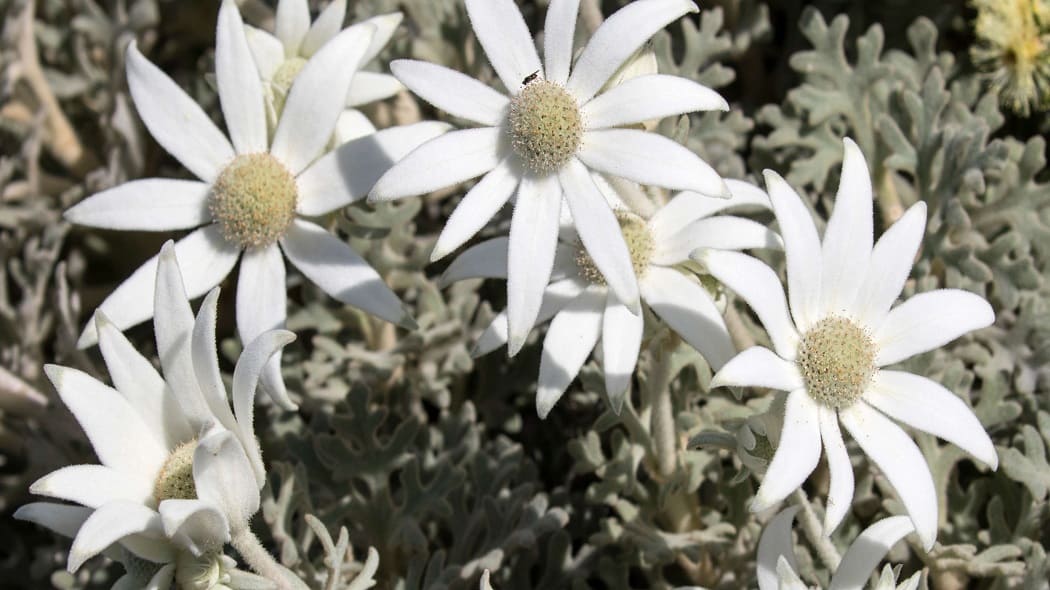
Flannel Flowers showcase charming flowers from late winter to summer. The blooms feature papery, overlapping bracts in white, pink or mauve with tiny central florets. The large, velvety flower heads grow on upright slender stems rising above neat rosettes of dark green, hairy leaves.
Popular varieties like Actinotus helianthi showcase large, bright white blooms. The cultivar 'Pink Champagne' sports gorgeous deep pink flowers. These enchanting beauties work beautifully as border plants or grouped en masse in native gardens and rockeries. Their soft textured blooms also feature in fresh and dried floral arrangements.
4. Bottlebrush
Bottlebrushes belong to the genus Callistemon which includes 40 species of shrubs and small trees in the myrtle family, Myrtaceae. They are native to Australia and showcase colourful bottlebrush-shaped flower spikes that give them the common name.
Callistemons grow well in full sun and well-drained acidic soils. They flourish with minimal watering once established and tolerate drought, light frost and coastal conditions. Pruning old flower spikes after blooming encourages repeat flowering. Providing organic mulch helps retain soil moisture. Avoid overfertilizing with nitrogen as it causes leggy growth at the cost of flowers.
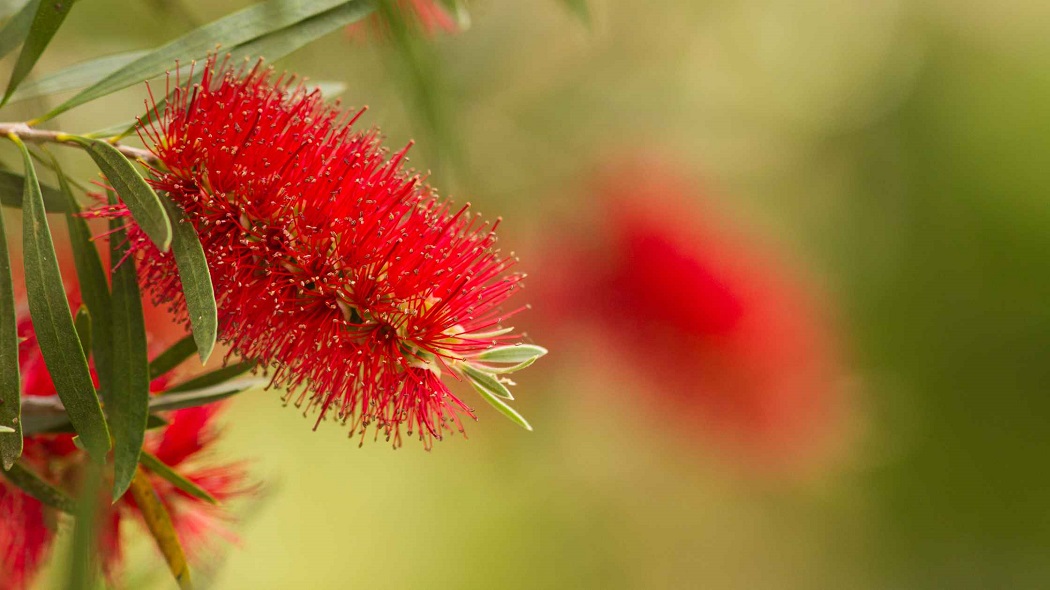
Popular Callistemon species like Callistemon viminalis and Callistemon citrinus showcase bright red bottlebrush blooms that inject colour into gardens over spring and summer. They work beautifully as specimen plants, hedges and screens. Their nectar-rich flowers also attract birds and pollinators.
5. Waxflower
Waxflowers belong to the genus Chamelaucium, consisting of about 10 species of Australian native shrubs. They are named for their glistening waxy flower petals. Popular varieties grown commercially include Chamelaucium uncinatum and its hybrids.
These hardy plants thrive in sunny spots with well-drained, slightly acidic sandy soils. Once established, waxflowers have modest water requirements and tolerate drought, salt spray and light frosts. Pruning immediately after flowering encourages repeat blooms.
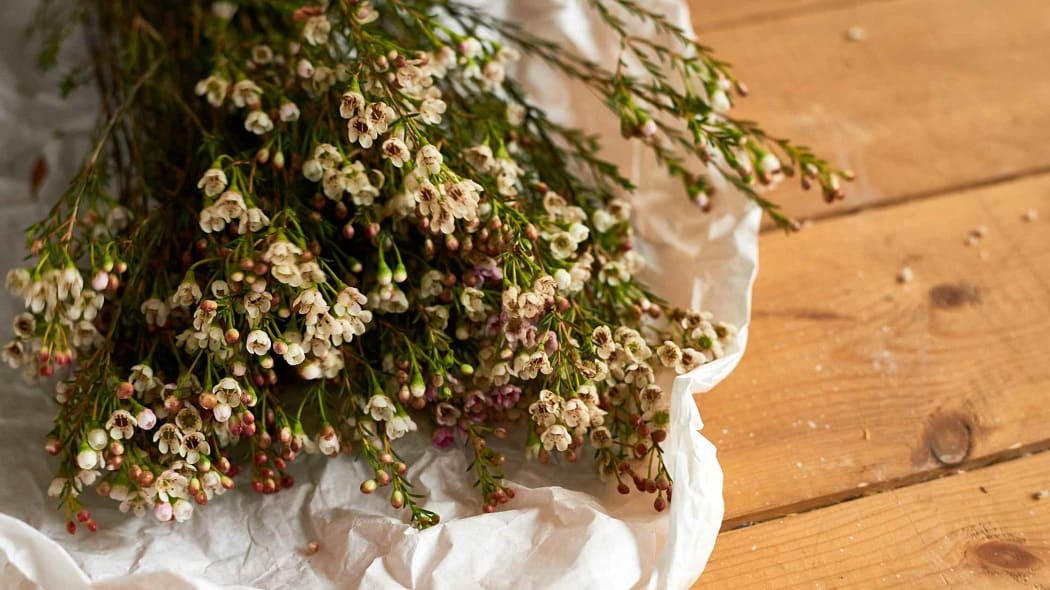
Waxflowers produce charming flowers throughout spring and summer. Bell-shaped blooms in white, pink, red and purple shades appear at stem tips. Cultivars showcase improved traits like large, fuller flowers, longer vase life and seasonal timing.
Long lasting cut waxflower stems are extremely popular in floral arrangements and bouquets. The waxy flowers also work beautifully in borders and rock gardens, as container plants or informal hedges that attract bees and birds.
6. Strawflower
Strawflowers, also known as Helichrysum or Bracteantha, are annual and perennial plants valued for their papery, colorful flower heads that retain their shape when dried. Popular varieties used as cut flowers and in gardens include Helichrysum bracteatum and Bracteantha bracteata.
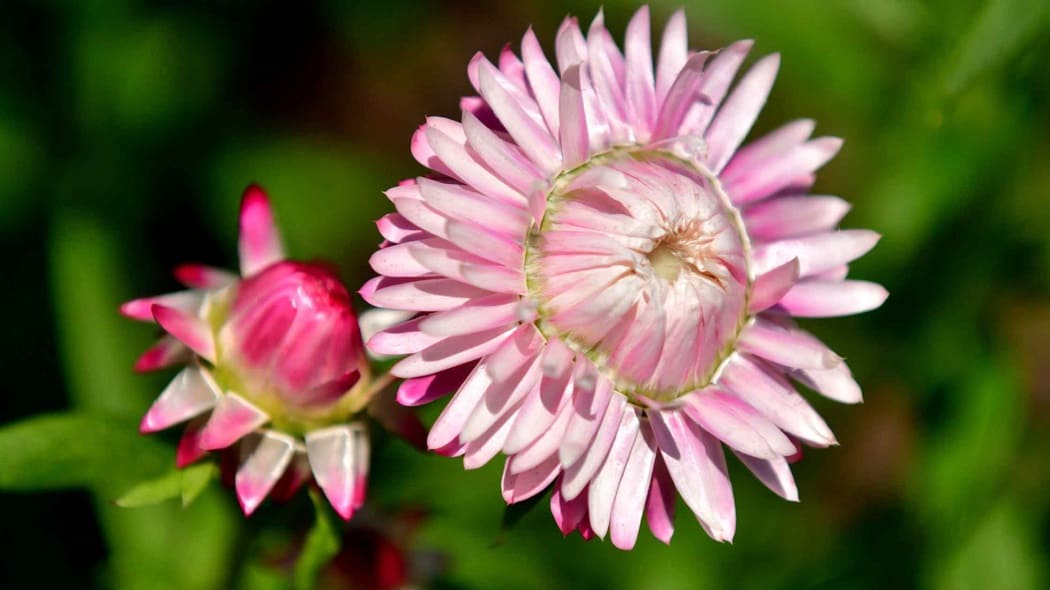
These tough plants thrive in full sun and well-drained soil. They tolerate heat, drought, and some frost once established. Pruning spent blooms encourages more flowers. Strawflowers come in colors like red, yellow, white, pink, and orange. They add vibrant, long-lasting color to gardens, containers, borders, and floral arrangements. Their long vase life makes them a florist favorite.
7. Billy Buttons
Billy Buttons (scientific name - Craspedia globosa) are flowering plants in the daisy family, Asteraceae. They are native to Australia and New Zealand. Other common names include drumstick flower, sun ball, and woolyheads.
Billy Buttons produce bright yellow, spherical flower heads about 1 inch wide resembling small balls on tall stems, arising from a rosette of hairy, narrow leaves. The blooms appear in spring through fall and make excellent fresh and dried cut flowers.
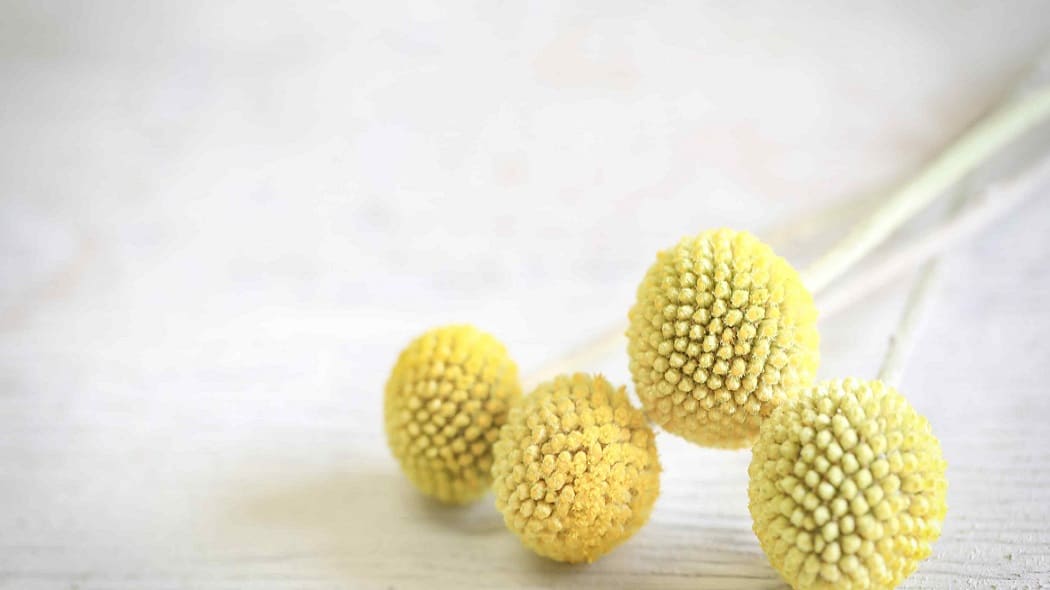
These hardy perennials thrive in full sun and tolerate most well-drained soils. Billy Buttons only require occasional water once established and are quite drought tolerant. They can reach 2 feet tall and spread 1-2 feet wide.
Craspedia add unique texture and vertical interest to gardens. They attract pollinators and make charming container plants. Both the fresh and dried flowers last very long in floral arrangements.
8. Banksia
Banksias are a genus of around 170 species of flowering plants in the proteaceae family. They are native to Australia and are easily recognized by their characteristic flower spikes and woody, cone-shaped fruiting bodies.
Popular garden varieties include Banksia spinulosa (hairpin banksia), Banksia ericifolia (heath-leaved banksia), Banksia aemula (wallum banksia), and Banksia integrifolia (coast banksia). Banksias range from prostrate shrubs to trees up to 25 meters tall.
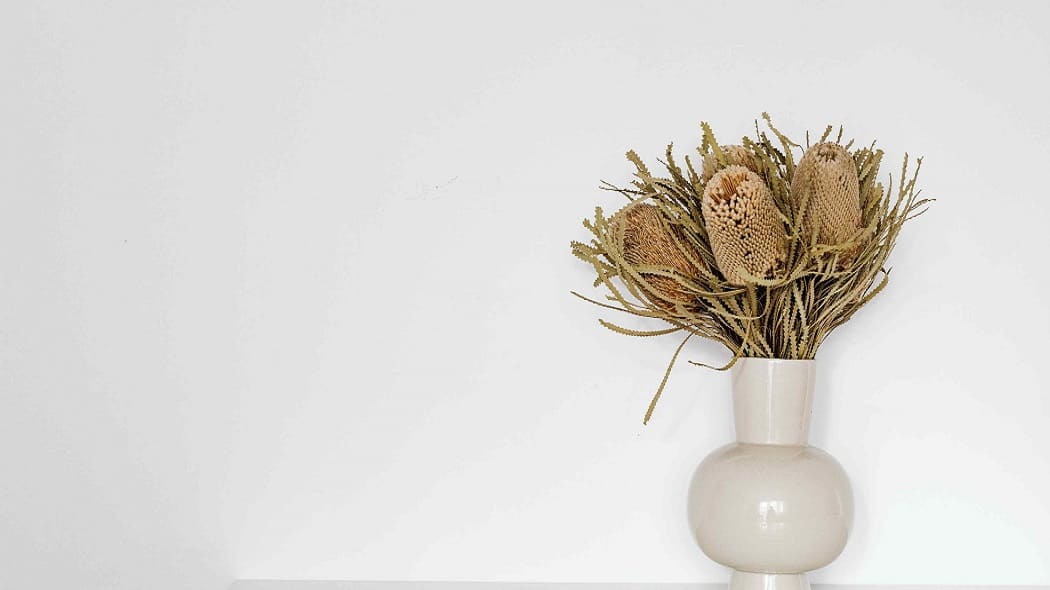
Banksia flowers produce large volumes of nectar which attracts birds and small mammals. They grow best in well-drained soils in a sunny position. Care must be taken to avoid root rot in humid environments. Low phosphorus fertilizers should be used.
Some Banksia species like B. brownii and B. verticillata are rare and endangered in the wild. Conservation efforts focus on habitat protection, seed banks, and sustainable cultivation.
9. Grevillea
Grevillea is a genus of over 360 evergreen flowering plant species in the Proteaceae family. They are endemic to Australia with a few species native to New Guinea, New Caledonia, and Sulawesi.
Grevilleas grow as shrubs or small trees in diverse habitats from rainforests to deserts. Popular garden varieties grow to heights ranging from prostrate groundcovers to 15+ feet tall. They produce unique flowers year-round in colors like red, pink, orange, yellow and white that attract nectar-feeding birds.
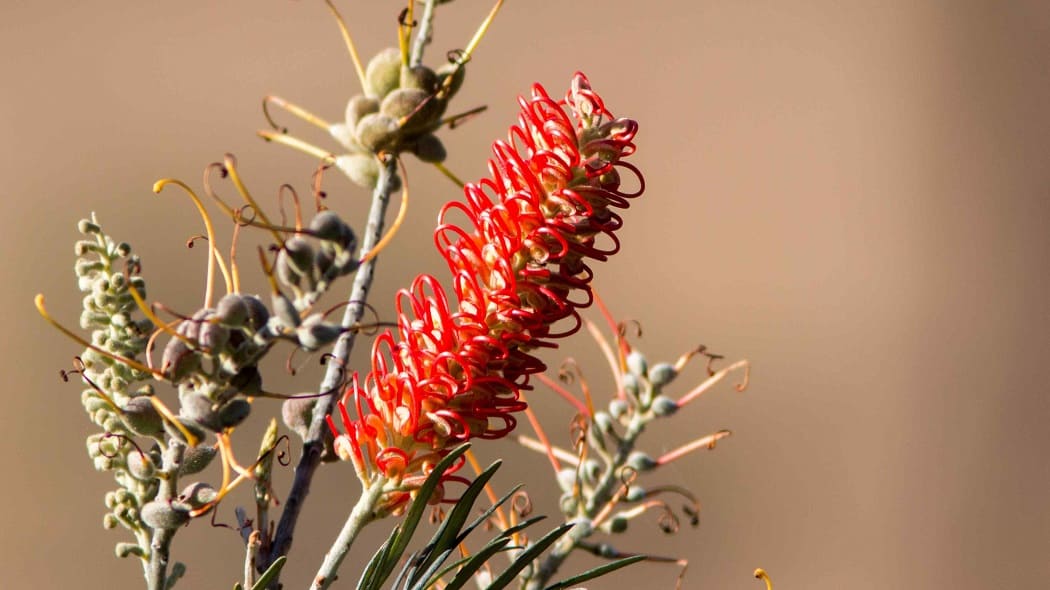
These versatile plants thrive in well-drained, acidic soils and full sun. Once established, most Grevillea species are drought-tolerant and low maintenance. They can withstand light frost but avoid waterlogged conditions. Pruning after blooming encourages more flowers.
Over 350 Grevillea species and 1000+ cultivars offer diverse forms, flowers and foliage. Conservation efforts protect rare endemic species while new decorative hybrids continue to be bred.
10. Acacia
Acacia is a large genus of over 1000 shrub and tree species in the pea family Fabaceae. Acacias are native to warm temperate and tropical regions of the world, with most species native to Australia.
The genus gets its name from gum arabic, also known as acacia gum, which is harvested commercially from acacia trees. True acacia trees have characteristic clusters of small yellow flowers and feather-like leaves. Their seed pods, bark, and wood are also useful.
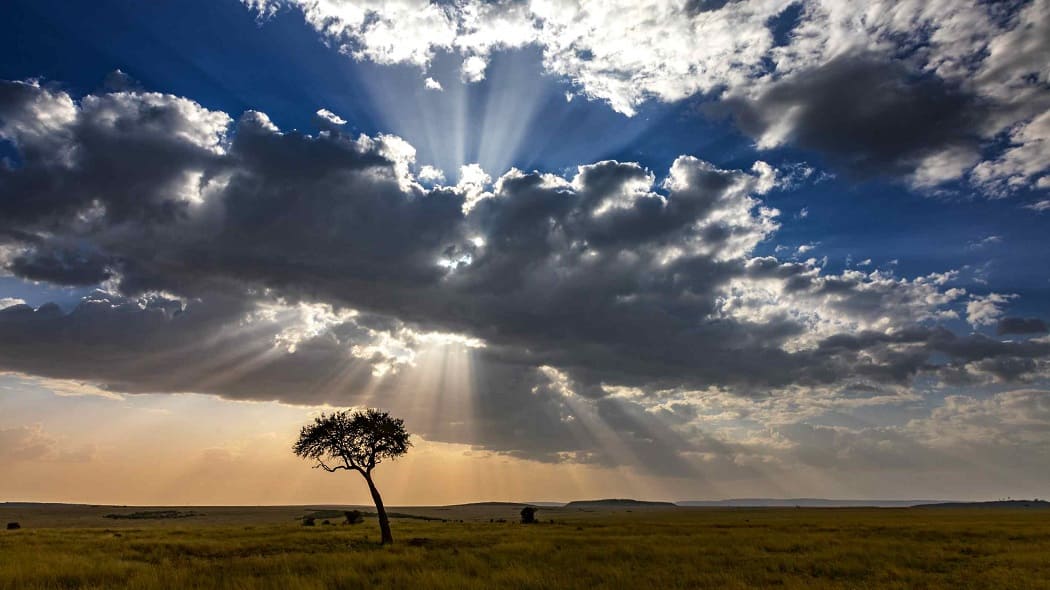
Many acacia species have symbiotic relationships with ants that protect them from predators. However, introduced species can disrupt these mutualisms. Conservation efforts focus on protecting rare endemic acacias through habitat preservation and cultivation.
Acacias are popular garden and landscaping plants appreciated for their graceful foliage and golden blooms. Their durable wood is valued for furniture, flooring and utensils. Extracts from acacia flowers, leaves, bark and seeds are also used in traditional medicine and perfumes.
Characteristics of Australian Native Flowers
Australia's unique native flowers have evolved special traits to thrive in this continent's challenging growing conditions.
- Australian native flowers can tolerate extreme heat, drought, flooding, and frost. Special features like waxy leaves, hairy stems, and bulbous roots help them retain moisture in dry times.
- Many iconic flowers like Banksia and Grevillea have adapted to nutrient-poor soils. Their proteoid roots fix nitrogen allowing growth even in sandy dune systems.
- Native flowers showcase fascinating forms from Spider Orchids to Kangaroo Paws. Flannel Flowers and Billy Buttons feature soft textured blooms resembling their namesakes.
- Flowers like Waratah and Sturt's Desert Pea dazzle with intense red hues. Others like Waxflower and Bluebell Creeper sport cool blue tones. This colour diversity attracts specific pollinators.
- Native blooms like Banksia and Protea flowers feature stiff woody stems and compact flower heads allowing them to persist for months. The dried flower heads of Strawflowers also retain colour.
Habitats and Ecosystems of Native Flowers
Australia's diverse landscapes and variable climate have resulted in richly distinct floral communities across different habitats.
Rainforests
Tropical rainforests in Queensland and northern NSW host magnificent blooms like Red Cedar, Native Frangipani, and Pink Euodia. Misty temperate rainforests are home to fern-leafed Gymea Lilies.
Woodlands
Flowering eucalypts burst with colour transforming open woodlands in spring. Bush Pea, Chocolate Lily, Bluebell Creeper, and Waxflower form delightful understories.
Heaths and Scrubs
On sandy coastal soils, vibrant Epacrids like Coral Heath and Prickly Beauty thrive amidst woody shrubs and heaths. Dry inland scrubs host hardy beauties like Smokebush and Pigface.
Deserts
While deserts may seem devoid of colour, spring transforms them with wildflower blooms like Sturt’s Desert Pea, Desert Rose, and golden Wattle. Even ancient Mulga acacias flower after rare rain.
Conservation of Native Flora
Many Australian native plants face threats from clearing, grazing, invasive weeds, and climate change. Various efforts strive to protect our botanical heritage.
Threats and Challenges
Since European settlement, nearly 50 species have become extinct. Over 1,200 more are threatened as habitats get destroyed for farms, mines, and cities. Even parks face weed invasions, altered fire regimes, and climate shifts.
Protection Strategies
Botanic gardens play a key role by maintaining specialised collections, seed banks, and propagation programs. National Parks preserve habitats, while recovery plans aid threatened species. Community groups also undertake restoration drives in reserves and on private property.
Sustainable Practices
Eco-friendly farming techniques reduce land clearing and run-off. Retaining paddock trees and hedgerows provides refuge. Careful planning of new developments along with green roofs and walls allow for coexistence with native flora. Fire management, weed control, and erosion mitigation also aid conservation.
Cultivation of Native Flowers
Many striking Australian native flowers can be grown successfully in home gardens if some key factors are considered regarding their propagation and care.
Soil, Sunlight, and Water Requirements
Most natives thrive in sunny spots with well-drained sandy or loamy soils. Improving drainage in clay soils allows healthy root growth. Grouping plants by water needs—drought tolerant varieties together and moisture lovers in shadier, damper spots—makes irrigation easier.
Propagation Techniques
While some species can be grown from seed, vegetative propagation from cuttings or division is simpler for many popular flowers. Techniques like grafting desired varieties onto hardy rootstock helps boost resilience.
Popular Garden Varieties
Kangaroo Paws, Banksias, Grevilleas, Eucalyptus, and Bottlebrushes inject vibrant colour into gardens. For shady spots, Correas, Epacris, and Phebaliums add charm. Ground cover banksias and the Brachycome ‘Coastal Carpet’ variety blanket areas with gorgeous blooms.
Usage of Native Flowers
From floral arrangements to skincare, Australia’s endemic flowers are valued in various commercial and therapeutic applications.
Cut Flowers and Bouquets
Native blooms like Banksia, Protea, Waxflower, and Billy Buttons feature prominently in the cut flower industry. Their long vase life, eye-catching forms, and colors make them popular in floral displays. Some species are exported globally by the floral trade.
Landscaping
Vibrant flowering native trees like Red Flowering Gum, Bottlebrushes, and Paperbarks inject color into gardens and public spaces. Hardier species thrive with minimal care, saving water and maintenance costs compared to exotic varieties.
Herbal Medicine
The essential oils and antiseptic properties from Tea Trees and Paperbark flowers have medicinal value. Golden Wattle flowers were used as an antiseptic by indigenous groups when made into a poultice.
Cosmetics and Fragrance
Fragrant flowers like Boronia, Kunzea, and Leptospermum provide essential oils for perfumery. The antioxidant-rich plant extracts from flowers including Kakadu Plum and Lemon Myrtle feature in skincare preparations.
